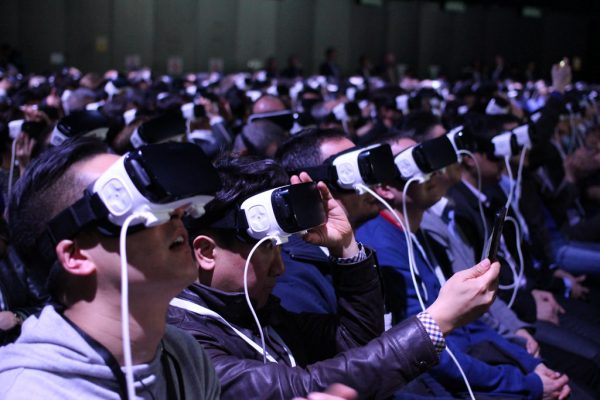There is a growing movement to address inequality through technological innovation. Some institutions that fund or conduct innovation have established scholarship and mentorship programs to diversify science, engineering, technology, and math, assuming that a more representative technical workforce will lift up historically disadvantaged communities. Others are investing in programs dedicated to innovation “for good,” as the consulting firm McKinsey puts it, or sponsoring researchers who investigate how technology can be made more fair, accountable, and transparent. Meanwhile, governments are striving to incorporate equity considerations into the regulation of new technologies.
All of these initiatives are likely to yield some benefits, but they take for granted that the basic structure of the innovation process should be left alone.
The standard model of innovation proceeds in a more or less linear sequence: it begins with an ideation phase, moves through research, design, and testing, and ends with commercialization. On this view, social benefits arise from the marketplace, so getting a product to market is the goal. The government might invest in early-stage research, but it is up to the private sector to get products to the public, and companies that succeed are rewarded with patents for doing so. According to this picture, the major obstacle to repeating the social good that comes from innovation is the so-called “valley of death”—the arduous phase between concept and market where most ideas fail—and the solution is targeted investment and deregulation. In other words, society should get out of the way, let technologists and engineers do their jobs, and perhaps only regulate after the fact should the need arise.
Without a doubt, this approach to innovation has stimulated macroeconomic growth, produced many valuable products, and created jobs, particularly for highly skilled workers. But it has also contributed to vast and growing inequality, deepening the concentration of wealth among the very few. It has often incentivized the development of technologies that at best ignore and at worst harm marginalized communities. And it has made many crucial innovations inaccessible to those who need them most; the very communities that are sometimes invoked as the beneficiaries of new technologies are often simply priced out of affording them.
Consider treatments for hepatitis C, which afflicts around 2.4 million Americans. Over the last decade, the Food and Drug Administration (FDA) has approved remarkably effective drugs produced by companies like Gilead Sciences and Janssen Pharmaceuticals, but they can be prohibitively expensive for the people who need them most. To remedy this, the Biden administration recently suggested a “subscription” model to improve access: the government would pay a lump sum to manufacturers, who would then fill requests from places like prisons or community health centers.
Similar proposals have focused on government-sponsored prizes or patent reform. But even if such efforts could guarantee that crucial technologies were made affordable and available for all who needed them, they would do nothing to dislodge the presumption that the public should largely get out of the way of private companies as they seek to bring a product to market. In reality, access and distribution are only the last link in a chain that must be significantly rethought if innovation is to combat inequality. In short, we need to reimagine the innovation process itself.
Fortunately, we have instructive examples to look to. By following their lead—incorporating ordinary citizens into the innovation process and fostering less linear, more dynamic innovation paths involving a more diverse array of experts—we can start to build a more just future for innovation, in which all truly benefit from new technologies.
If ordinary citizens figure into the traditional innovation process at all, it is as unskilled labor or, increasingly, as raw material. This includes the human data that informs the ideation stage when problems are identified, potential solutions are formulated, and prospective markets are estimated. Later on in the innovation pipeline, potential users test newly developed technology and report their experiences, sometimes even putting themselves at risk in the process. All of these contributions, despite being necessary for innovation to function well, are devalued in the traditional model, subordinated to “real” technical work.
The standard model also paints innovation as a discrete, individual achievement—the work of a sole, usually male genius. Such narrow conceptions leave plenty out: think of the custodians who ensure that testing sites remain standardized, the spouses who make it easier for technical experts to work long hours, and the hourly laborers who ensure that repetitive yet crucial tasks are completed. In these ways, the standard model effectively erects a rigid boundary between innovators and laypeople, one that both reflects and reinforces existing social hierarchies. This arrangement creates problems for the substance of technological development. For one thing, it means that innovation is done only from a narrow perspective, missing the opportunity to encourage a broad range of viewpoints and concerns in the early stages of ideation, development, and design. Moreover, it devalues the abilities of those at the grassroots, who may lack specialized training and resources but who have a deep understanding of the problems they face—and often have clear ideas about how to solve them.
Some steps have been taken to bring the public into the fold. Take the water crisis in Flint, Michigan that broke out in 2014. Researchers flocked to the city to help it cope with lead poisoning, Legionnaire’s disease, and the scores of pipes that were damaged after the local government switched its water source to the Flint River. But many citizens were wary. Not only was the low-income, majority-Black community well aware of the racist history of science that included the Tuskegee syphilis experiment; they had also had previous engagements with researchers that left them feeling invisible. In these interactions, researchers had both diminished community knowledge and concerns and appropriated their ideas. This learned wariness was validated during the crisis: at first, scientists dismissed the severity of the city pipes’ lead problem and any link between the Legionnaire’s outbreak and the water supply.
In response, residents created the Healthy Flint Research Coordinating Center (HFRCC) and the Flint Center for Health Equity Solutions (FCHES) along with researchers at Michigan State University and the University of Michigan at Ann Arbor and Flint. These centers were designed to ensure equitable partnerships between Flint residents and Michigan universities that put the community’s needs, rather than scientists’ research agendas, first. Both identify needs and develop solutions collaboratively between researchers and residents, ensure appropriate credit is given to community members, create research efficiencies, and ensure ethical practices. Frustrated at first by the “helicopter researchers” who arrived in the city after the water crisis, community members now work with scientists to ensure that insights developed from the community’s data are brought back to inform and improve the city. Residents have also raised new research topics. In response to concerns about high rates of asthma, for example, researchers used geographic information system data to connect asthma rates with historical pollution from car factories, which eventually informed the response, including the deployment of mobile health units.
These programs demonstrate the valuable insights that communities can bring to the innovation process. But such efforts are small in scale—the exception rather than the norm—and there is much work that still needs to be done higher up the chain. Rather than being thought of as an end-stage concern, community expertise could instead be brought in from the very start. The institutions that drive innovation—including government, industry, universities, and philanthropic foundations—could fundamentally transform innovation processes by harnessing community expertise at every stage, starting with priority setting. Currently, the primary decision makers in the innovation pipeline are the technical and business communities who influence investments through advisory boards and review panels. Because they have specialized understandings of research and development, their participation seems appropriate. But technical expertise does not equal social wisdom.
As it stands, though, community voices are practically nonexistent in the decision making phase. The public can generally shape innovation only at arm’s length—voting for Joe Biden knowing that he is likely to invest heavily in cancer research, for example, or expressing their collective will through what they do or do not purchase. But this need not be the case. Innovation institutions could integrate non-technical communities into their existing decision making apparatuses in a variety of ways, from encouraging or even mandating their participation in expert advisory bodies to establishing offices of substantive community engagement in research funding agencies. Another way to incorporate community knowledge is through the creation of citizen forums, where a variety of communities could help to determine funding priorities and research programs.
For such efforts to be successful, however, the public, private, and nonprofit sectors must commit to incorporating these relationships into their policies and practices. For example, this engagement could lead to the development of new research programs that center the knowledge of communities experiencing a given problem. Researchers could also take explicit steps to ensure that the knowledge and concerns of historically disadvantaged groups, who are invariably ignored in scientific endeavors, are privileged. Institutions could also fund community organizations or grassroots innovators directly, connecting them with technical expertise and infrastructure to help evaluate their ideas and turn them into interventions. This kind of participation is already common in India, where the Council of Scientific and Industrial Research (CSIR) and National Innovation Foundation (NIF) are structured to value community-based knowledge. For example, in the early 2010s CSIR worked with the Self-Employed Women’s Association, an NGO, to design and manufacture low-cost disposable menstrual pads that fit women’s priorities and needs.
Finally, humanists and social scientists who study innovation could be integrated into the processes of priority setting and project evaluation, and could also participate as collaborators on the types of projects articulated above. At present, this expertise is rarely recognized in the development and evaluation of emerging technologies. But they offer a crucial perspective. While marginalized communities have direct and comprehensive knowledge of their own circumstances, the challenges they face, and the problems they have historically experienced with technology, social analysts offer a systematic understanding of how society shapes and is shaped by technologies. As a result, they can often anticipate problems that those more directly engaged with a technology cannot see and offer solutions based on their knowledge of other cases. In essence, they provide a different kind of technical expertise—contextual and systematic understanding of innovation in society—that is too often ignored.
In addition to incorporating community knowledge, the largely linear nature of the traditional model of innovation should be questioned. The dominant approach leaves both priority setting and decisions about the design and dissemination of solutions largely up to technology developers.
Indeed, governments and philanthropic foundations dispense funds primarily based on how peer reviewers evaluate the quality and feasibility of the researchers’ ideas and ability to accomplish project goals. Meanwhile, the private sector invests in technologies that seem most lucrative and uses intellectual property rights to protect information about their work to prevent competition. In both respects, there is little social discussion about whether we have settled on the right solution, how this solution might impact society, and whether there might be alternatives. And even when there is discussion about a controversial emerging technology, this rarely affects the technical endeavor itself. Implicit is the idea that technologists are able to identify the best solutions and should be free to create them, and that they will be able to identify and solve any problems that arise. If needed, regulators can step in to resolve any serious “market failures.”
The patent system reinforces this approach. In recent decades, courts and legislatures have expanded the inventor’s power by permitting intellectual property monopolies earlier on in the innovation process, such as allowing patents on DNA. As a result, universities—where much early-stage research is done—have established technology transfer offices to help their researchers file patent applications and then license patented inventions to companies who can develop them further. In addition to increasing the costs of the resulting technologies and enclosing the public domain, this system also encourages siloed research, where outsiders have little opportunity to observe, critique, or improve technologies as they are being built.
Consider the pulse oximeter, a ubiquitous medical device placed on the fingertip that is used to determine the amount of oxygen in the blood using light refraction. Oximeters played an especially important role in the COVID-19 pandemic: health care professionals used it to help determine disease severity and the need for supplemental oxygen. Japanese bioengineer Takuo Aoyagi developed the principle of pulse oximetry in the 1970s to improve on previous oximeters, which were invasive and sometimes inaccurate. From there, the pulse oximeter’s development proceeded along a familiar path. Building on Aoyagi’s work, U.S. companies developed and patented the device for the U.S. market in the 1980s and received FDA approval on the basis of its clinical efficacy. By the 1990s and 2000s, physicians published studies questioning the device’s accuracy among people with darker skin colors. However, they garnered little public attention and, on the whole, pulse oximeter companies did not respond. In essence, the system privileged the innovators and assumed that they would resolve any problems that arose.
At first glance, this may seem like a regulatory problem: the FDA did not evaluate the pulse oximeter properly. But it can be politically quite difficult to develop appropriate regulatory mechanisms for new technologies, particularly because innovation and regulation are often framed as conflicting. And even when clear regulations exist, oversight is minimal and does not address equity and justice considerations. In the United States in particular, the regulatory process is adversarial and values metrics that can withstand legal scrutiny. This was apparent in the case of pulse oximeters: the FDA evaluates only the safety and efficacy of medical devices, but it does not require they be tested in demographically diverse populations (which can be very difficult to recruit).
What if we addressed design flaws prospectively, by reimagining the stages of the innovation process prior to evaluation? Rather than waiting for regulators and testers to spot potential problems, a more collaborative innovation process can reveal them earlier. Imagine a system that allows for outside evaluation and encourages parallel avenues for development throughout the innovation process. Such evaluation could start shortly after a patent application becomes public. Patent offices and scholars already use these documents to understand the landscape of a particular industry. But at present, such assessments are neither systematic nor used to shape research and development priorities.
This is a missed opportunity. Both patent bureaucracies and technology transfer offices based at companies and universities could support equity assessments once patents are published. These assessments might consider whether a technology’s design might produce disparate impacts, whether its use might reinforce or amplify societal biases, and whether there are likely to be problems accessing it. In the case of the pulse oximeter, this might have triggered scrutiny of its use of light refraction and led to additional studies to evaluate whether the technology performed differently depending on skin color, and perhaps triggered an early caution to users that the device’s readings should not be the sole indicator of treatment recommendations.
Like the multidisciplinary institutional review boards that ensure the ethics of human subjects research, a combination of interdisciplinary experts and citizens could perform these assessments. While technical knowledge is crucial, so too are insights from the social sciences, humanities, and members of historically disadvantaged communities. The work of Amy Moran-Thomas, an anthropologist of science and medicine at MIT, is a case in point. In 2020 she published an essay in these pages detailing concerns about racial bias in the use of pulse oximeters, drawing on her extensive knowledge of the history of race and technology. Physicians at the University of Michigan took notice, publishing a study in the New England Journal of Medicine that found evidence of potentially serious clinical implications, which in turn led to national news coverage and prompted the FDA to issue a warning about the pulse oximeter in early 2021. (Further discussion of this issue took place before the FDA last fall.)
This case is just one small example of how much both technological development and the public interest have to gain from integrating more diverse forms of community and expert input into the traditional process of innovation. It demonstrates how the structure of the traditional process fails to maximize social benefit—and, along with institutions like Flint’s community-driven research centers, it points the way to more democratic innovation paths that do far more than aim to bring a concept to market. It is only by broadening our understanding of expertise, developing new ways to scrutinize technological design, and establishing new institutions and public policy to serve the public interest that innovation will truly work for the good of everyone.








